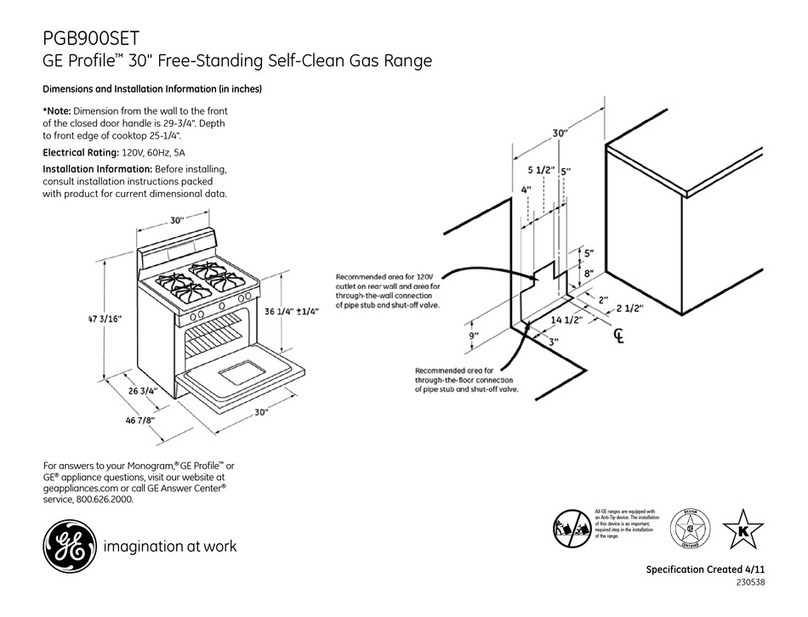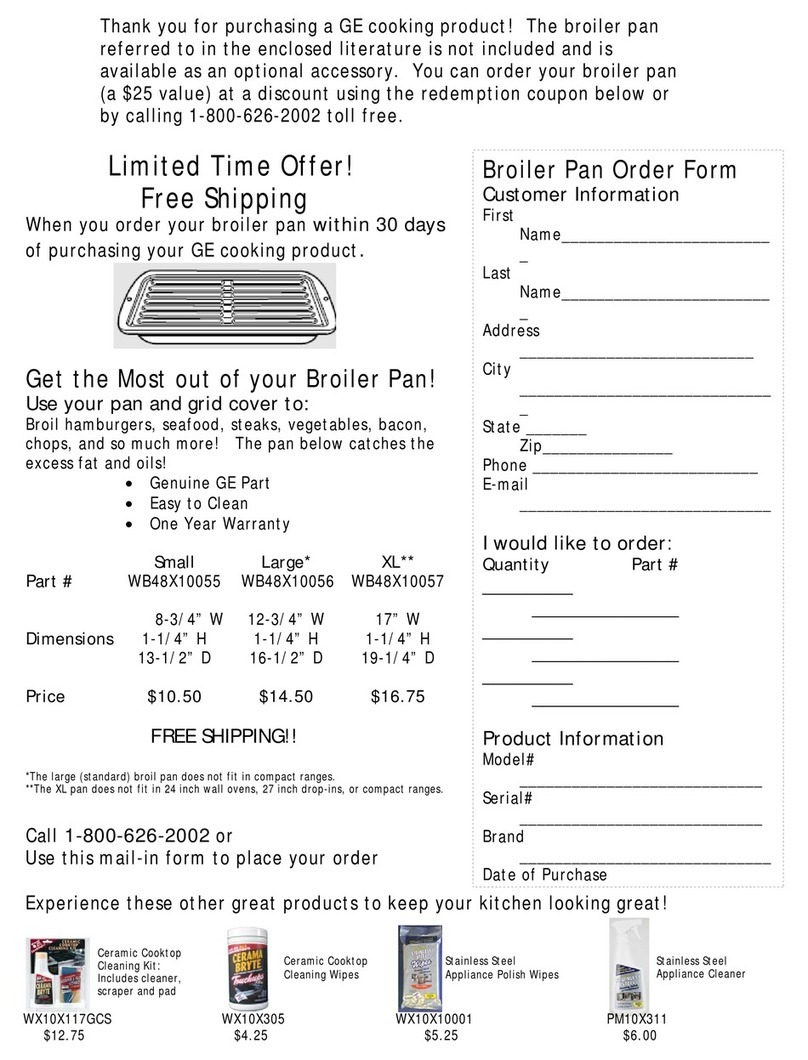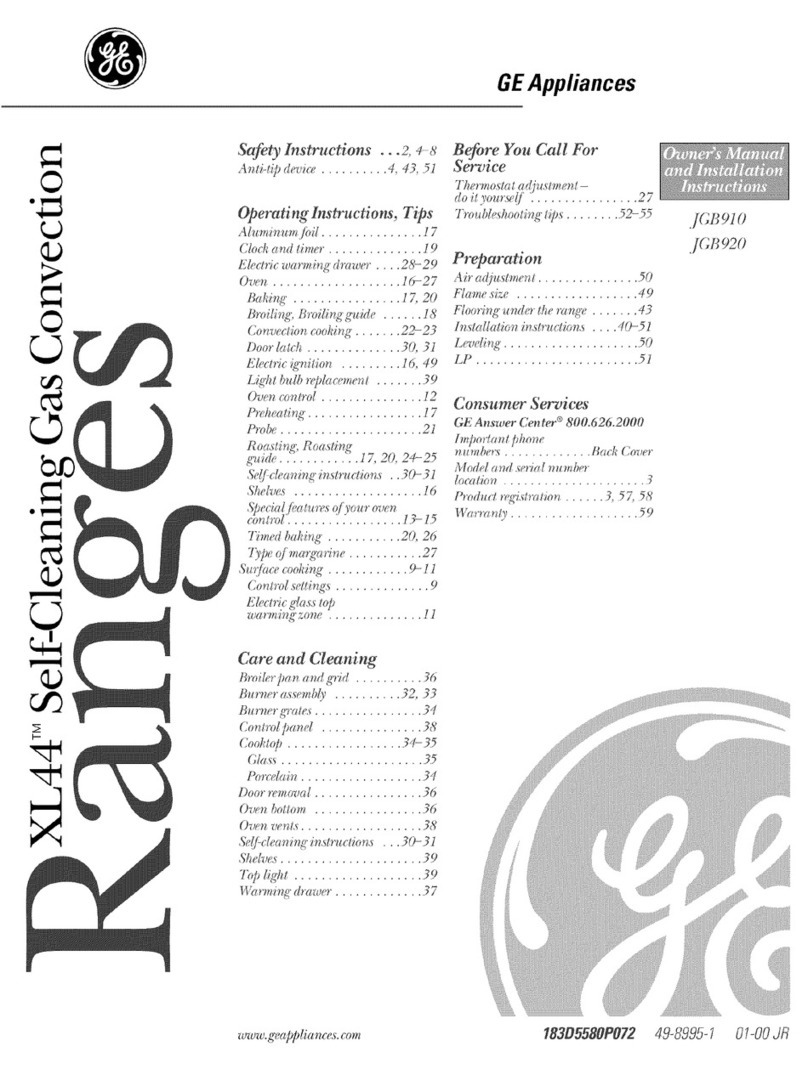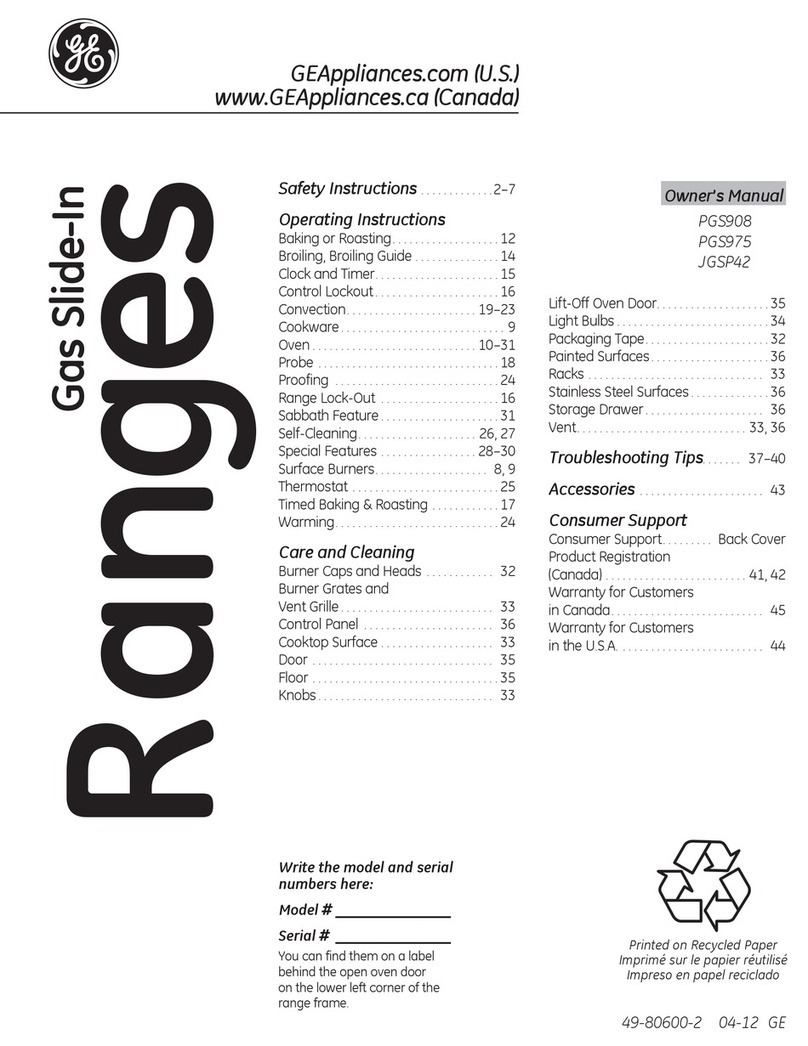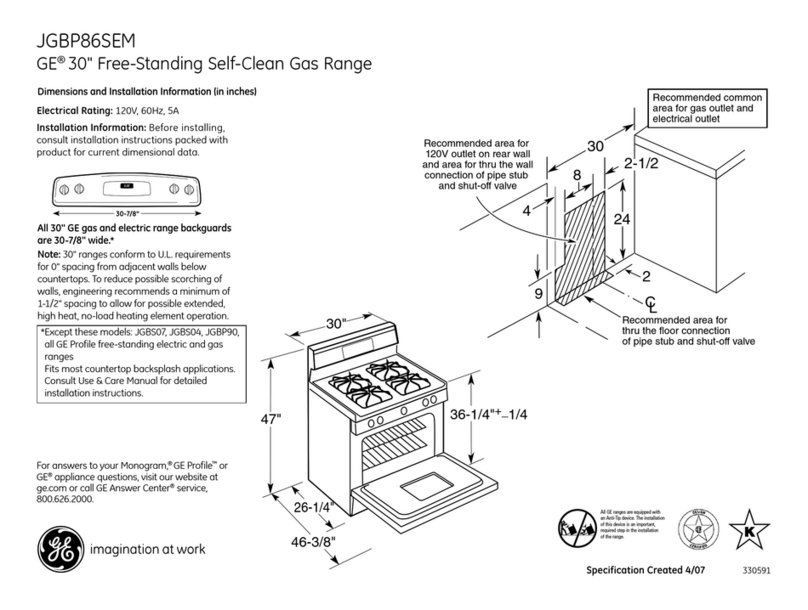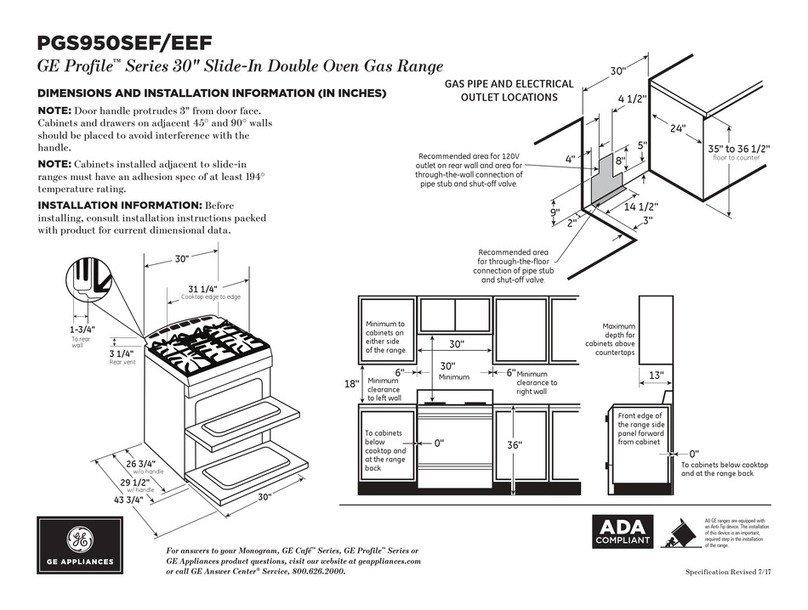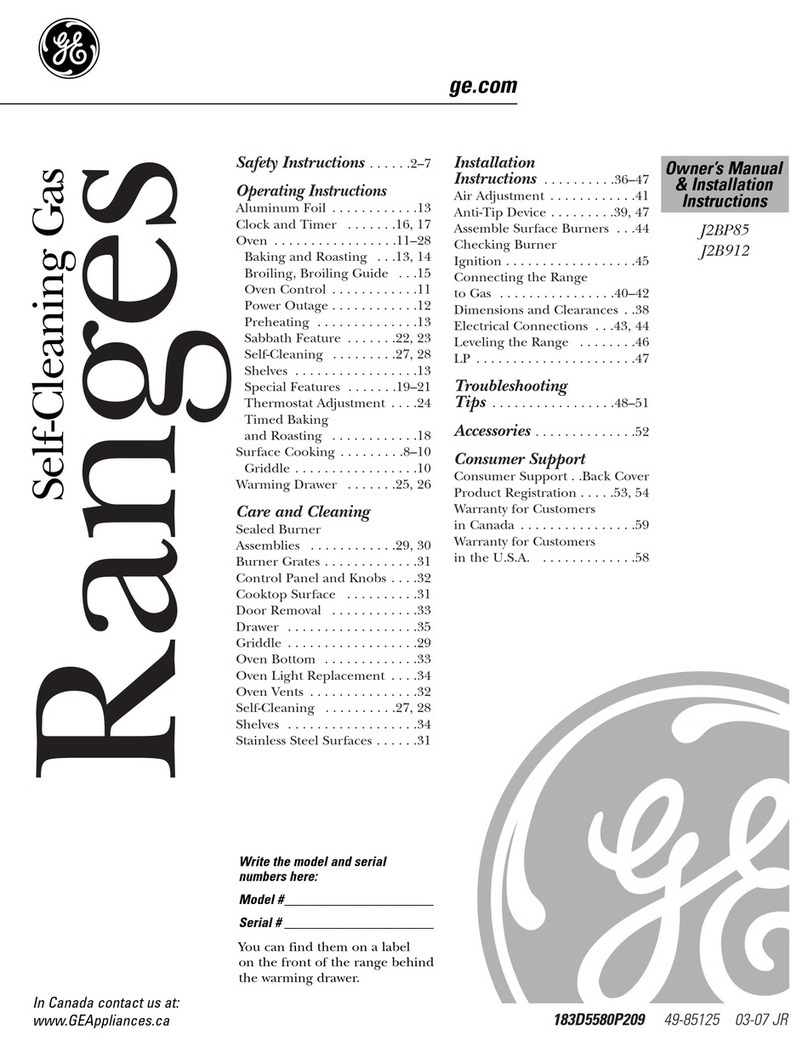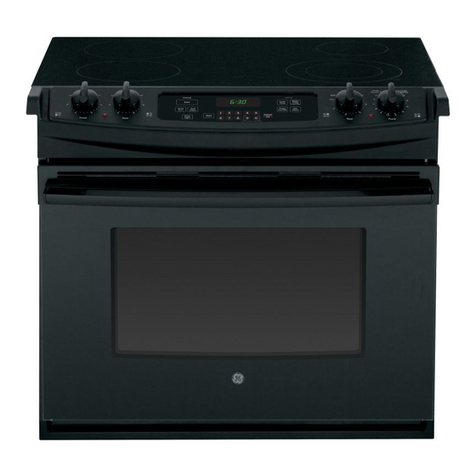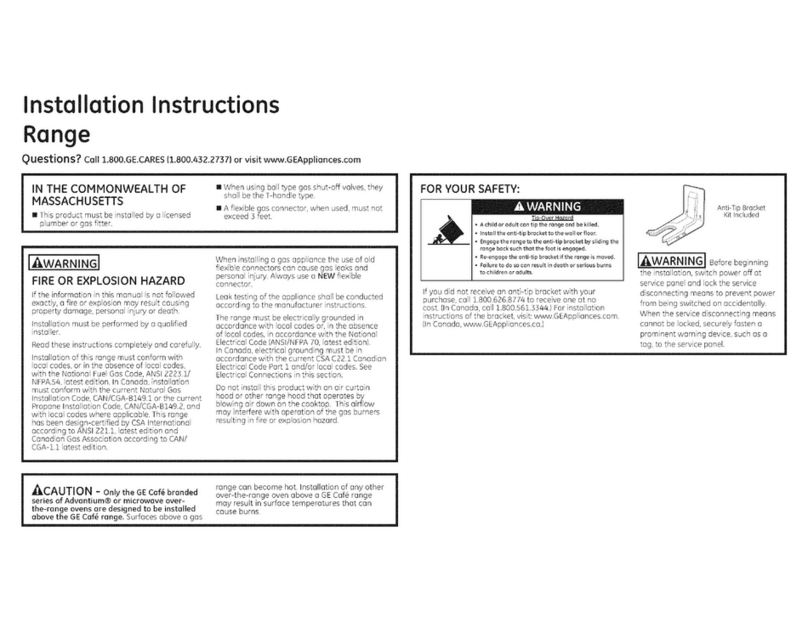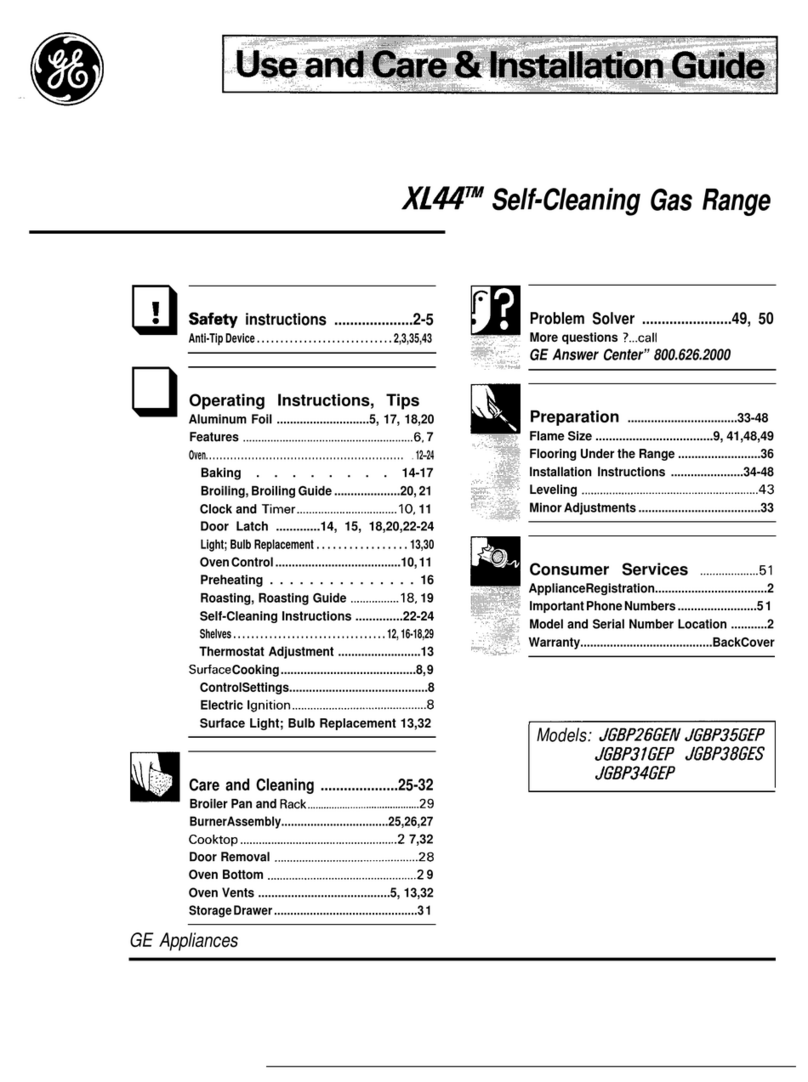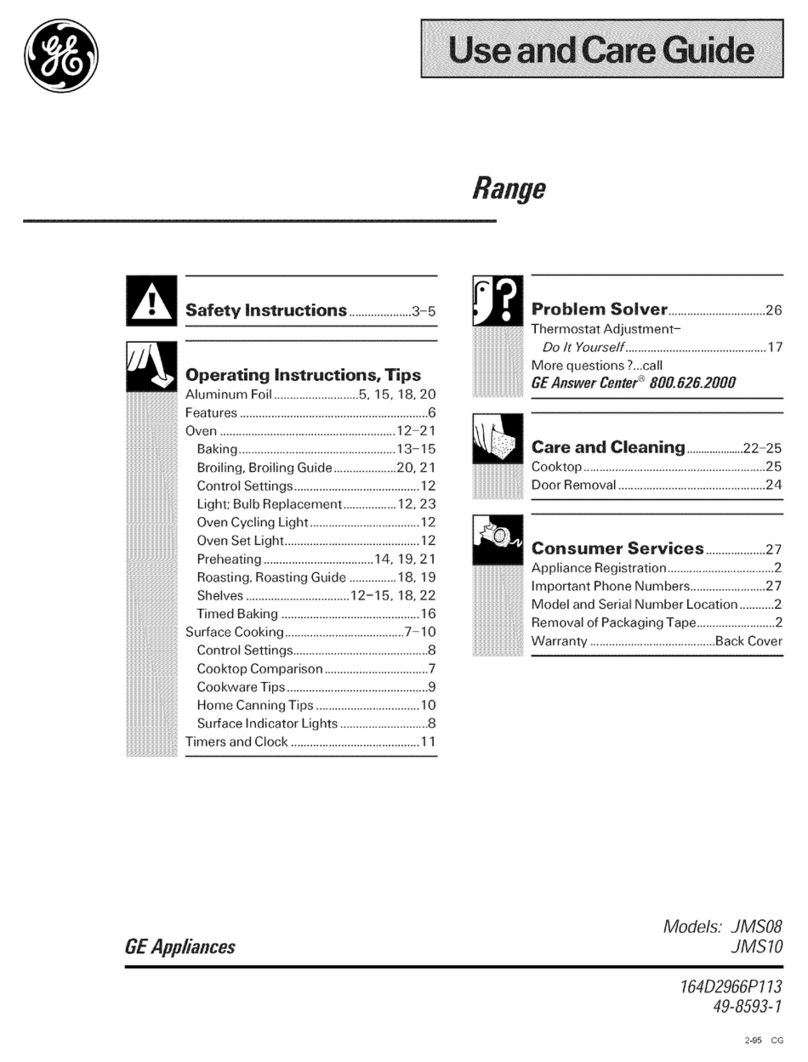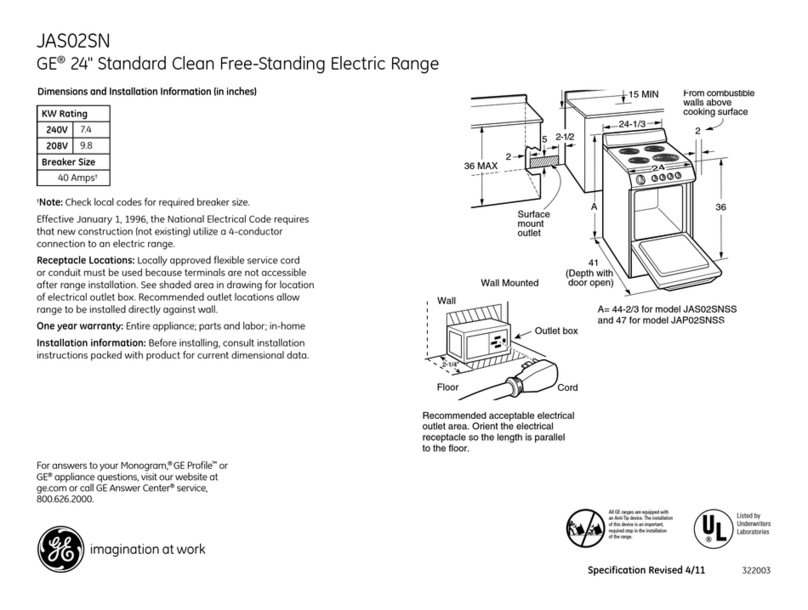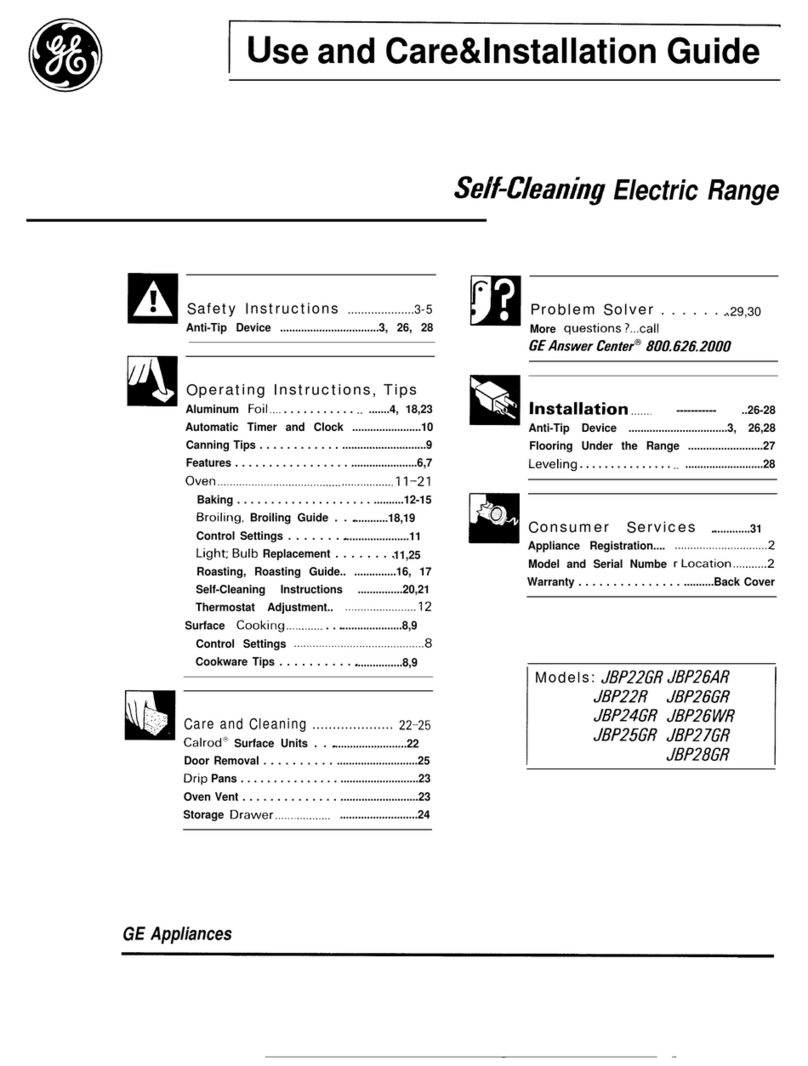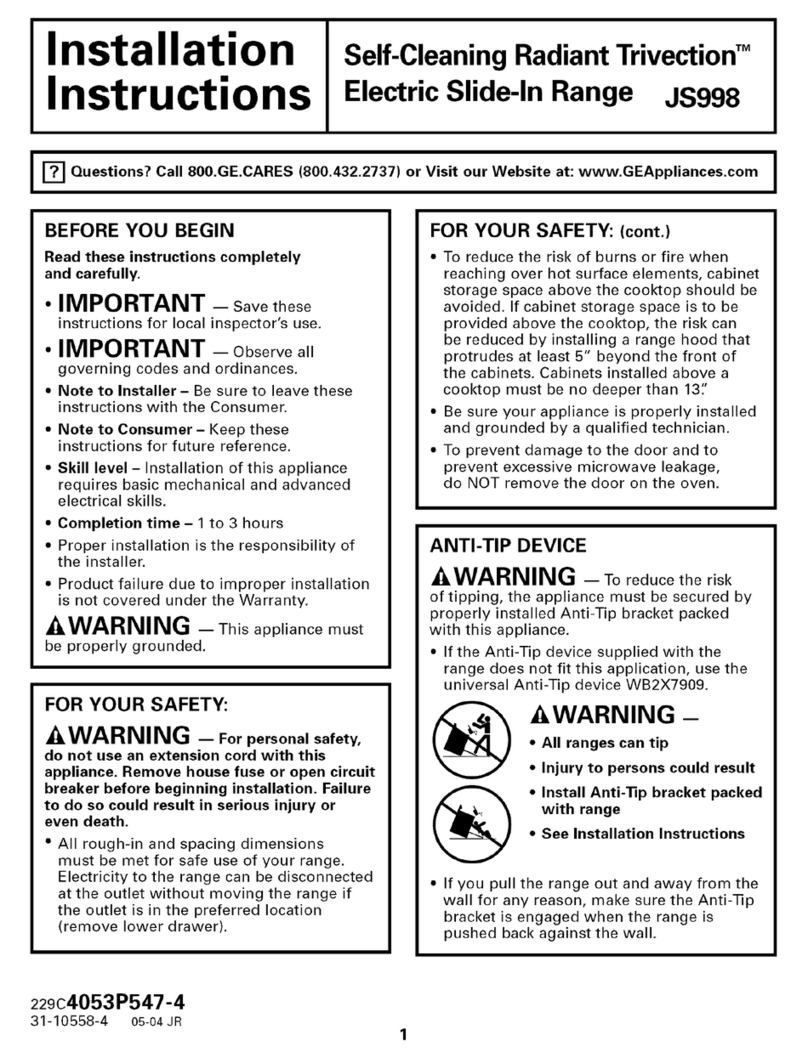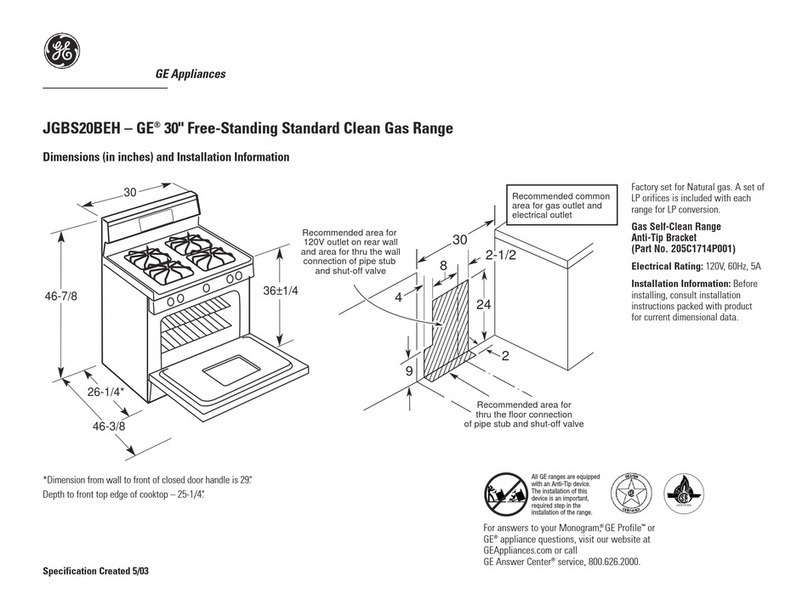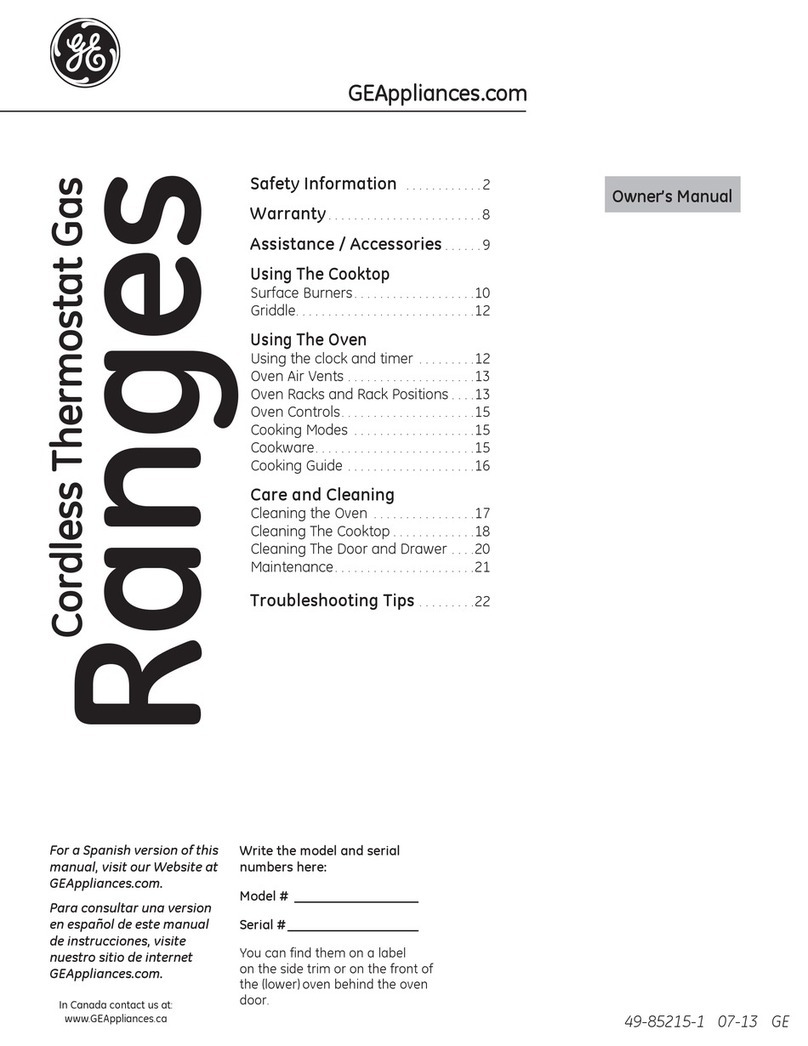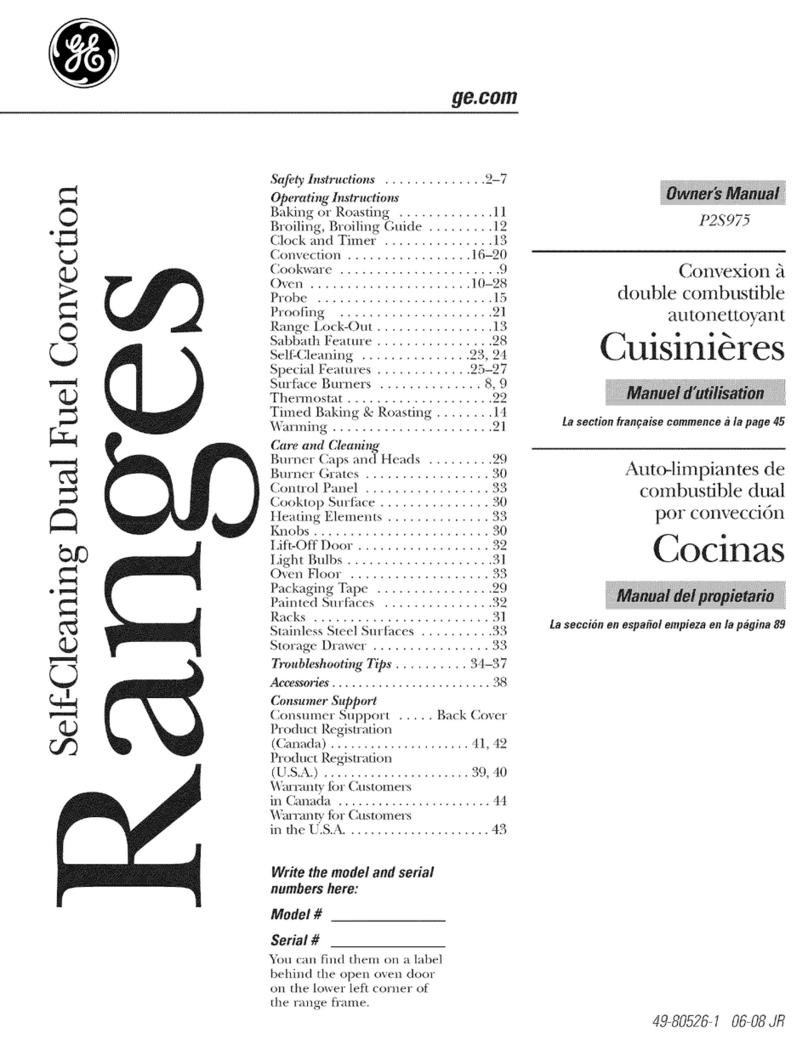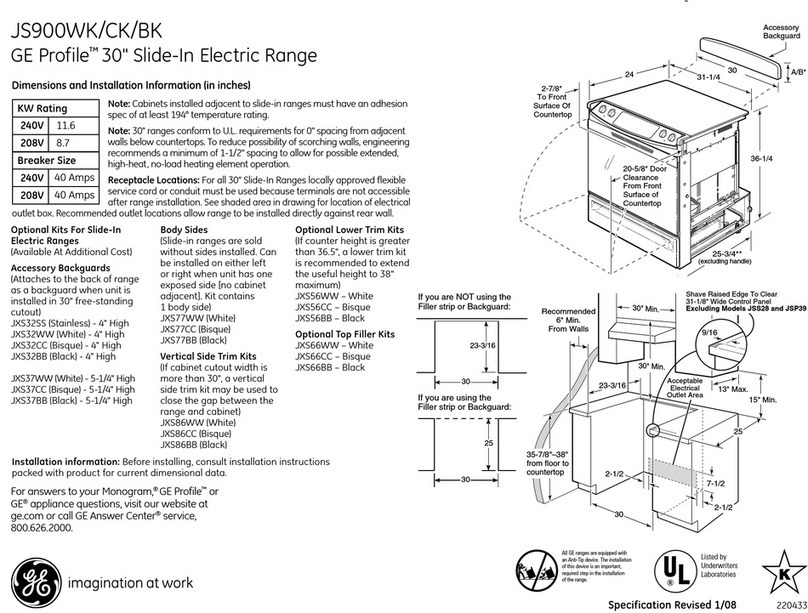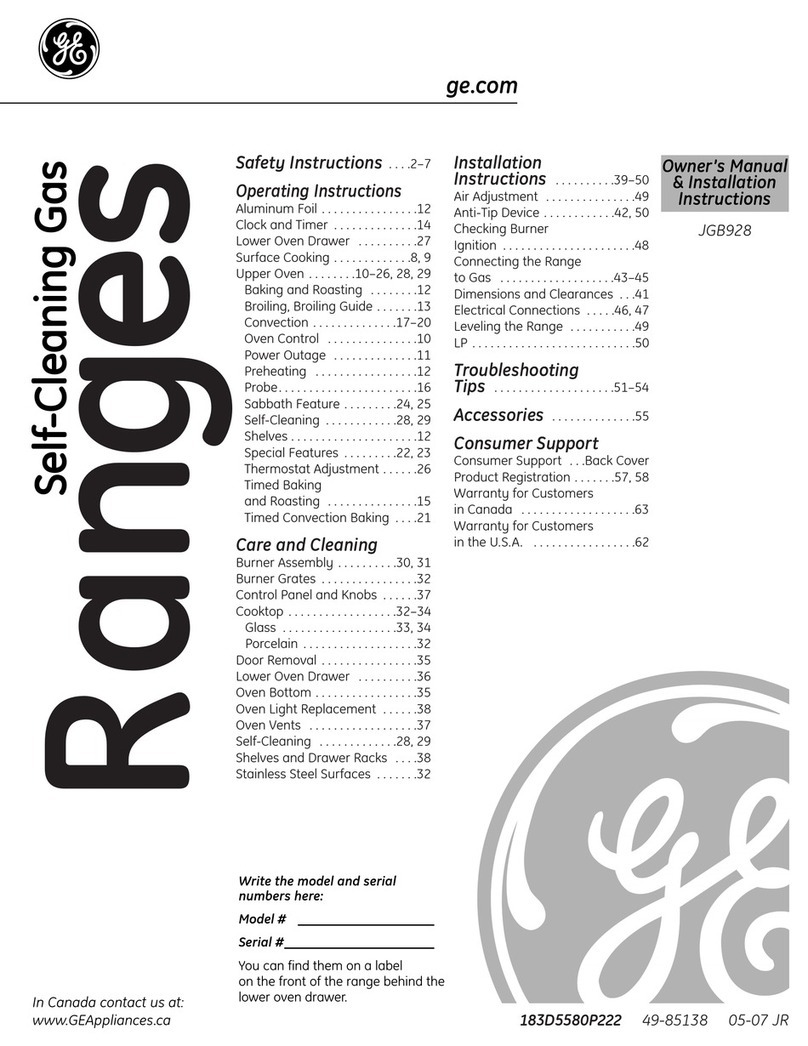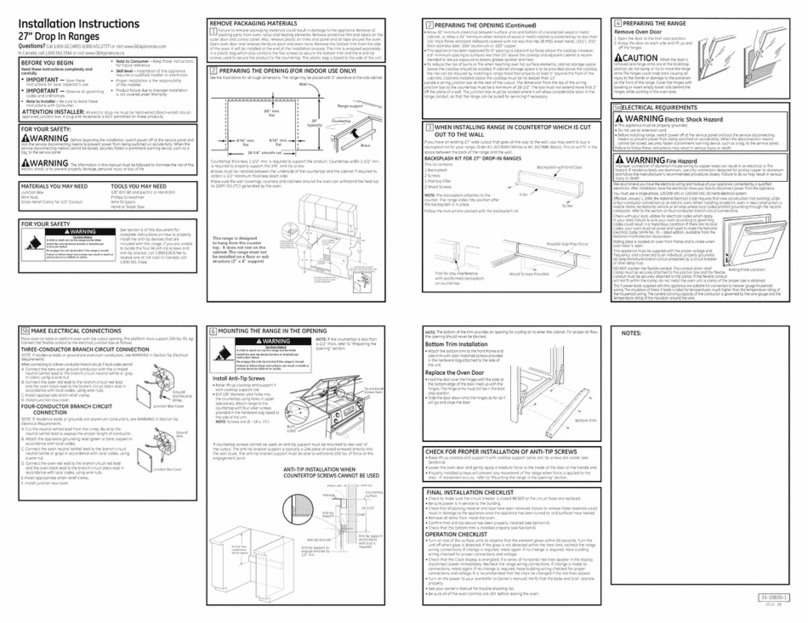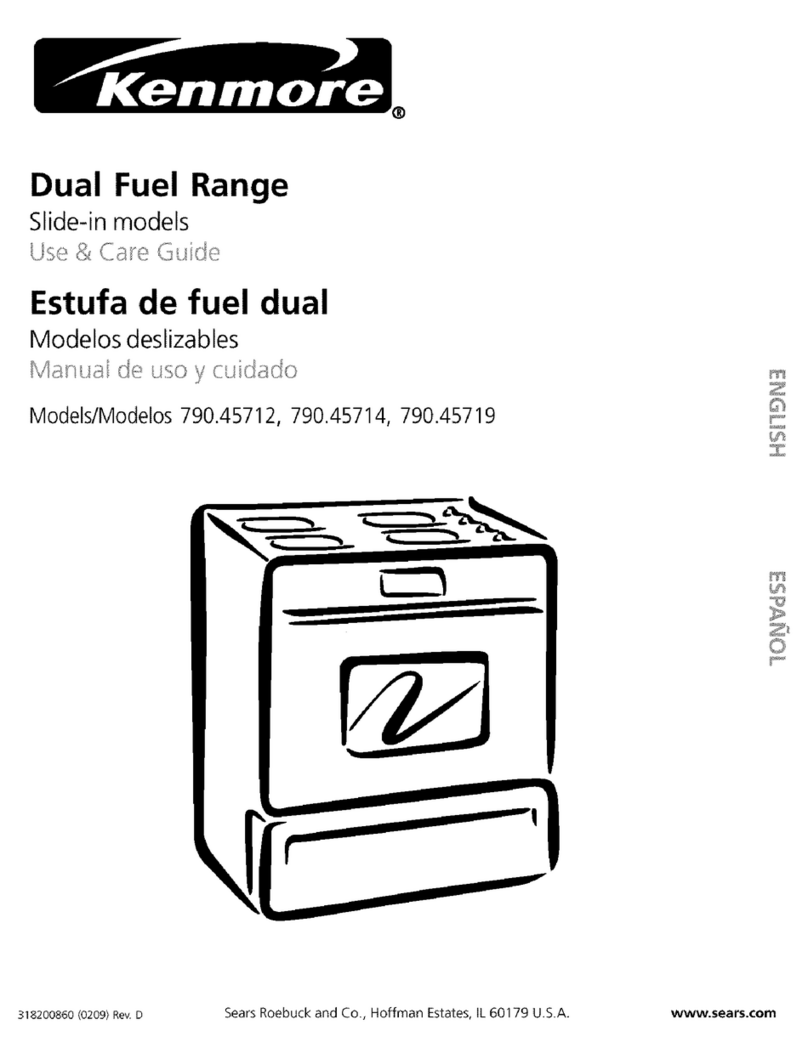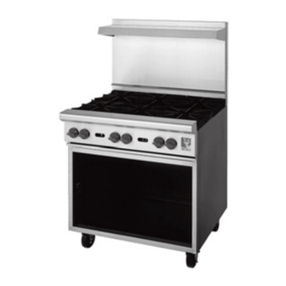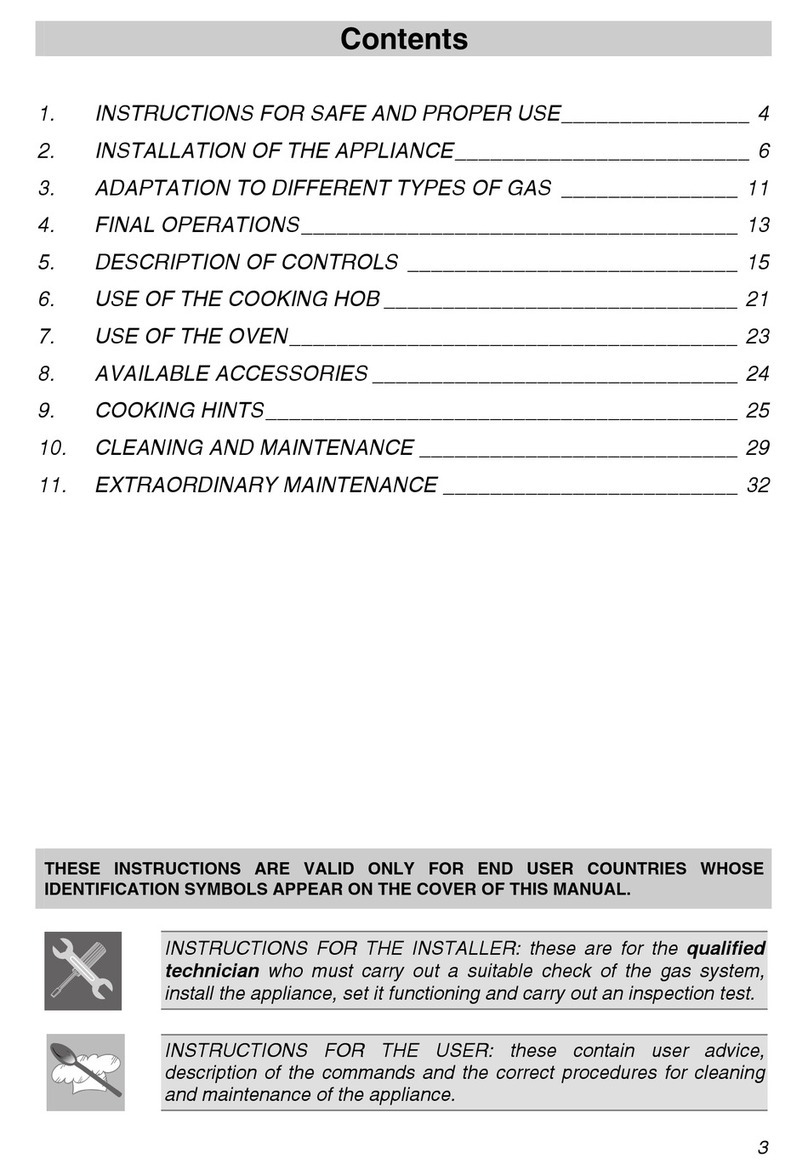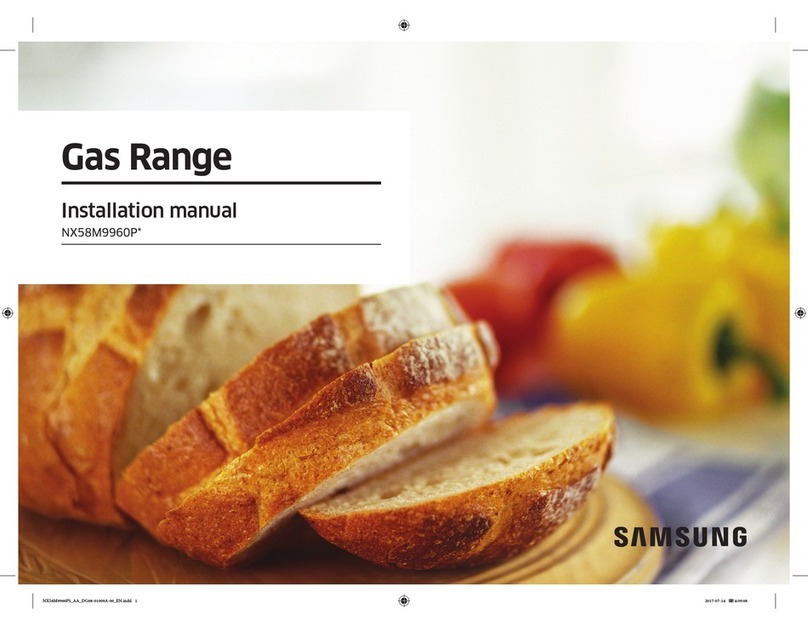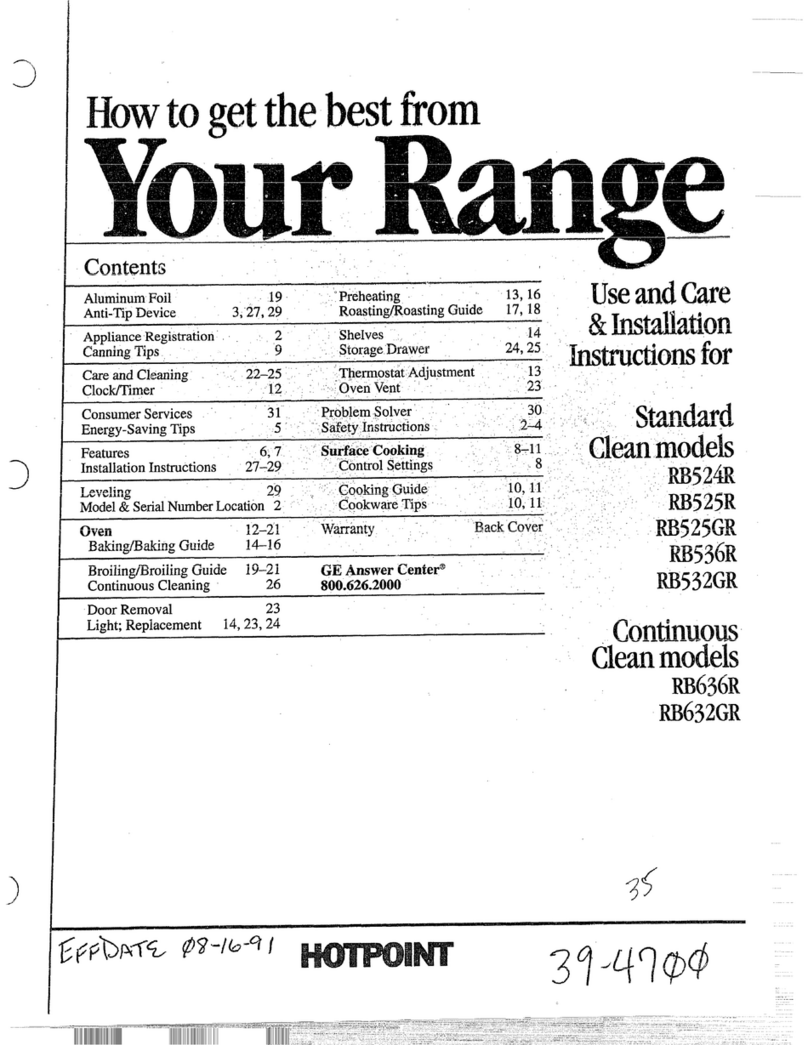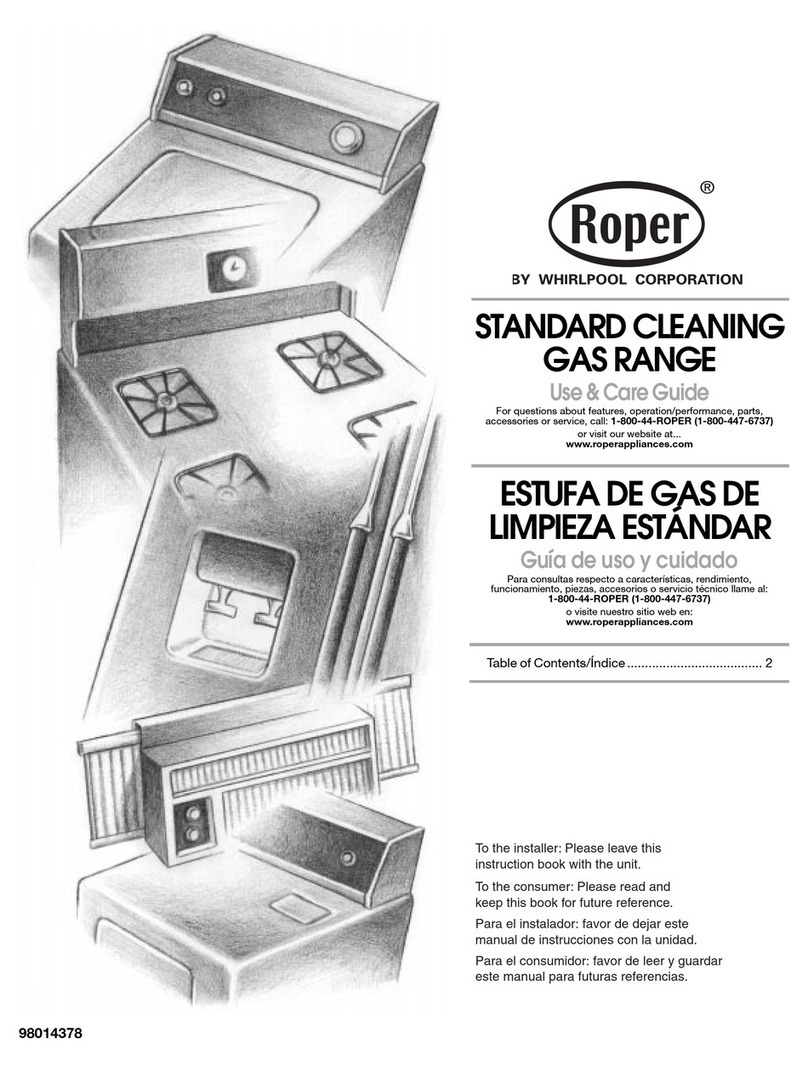.
JMPORT~T SAFETY INSTRUCTIONS (continued)
●Tominimize the possibility of
burns, ignition offlammable
materials, and spillage, turn
cookwarehandles towardthe side
or back ofthe range without
extendingover adjacent burners.
●Alwaysturn surface burner to
OFF before removing utensil.
●Carefuliy watch foods being
fried at HI flame setting.
●Never block the vents (air
openings) of the range. They
provide the air inlet and outlet
which is necessary for the range
to operate properly w~ithcorrect
combustion.
.Do not we awok on the
cooking surface if the wok has a
round metal ring which isplaced
over the burner grate to support
the wok. This ring acts as aheat
trap whichmaydamagetheburner
grate and burner head. Also, it
maycause the burner to work
improperly. This maycause a
carbon monoxide levelabovethat
allowedbycurrent standards,
resulting in ahealth hazard.
●Foods for frying shouki be as
dry as possible. Frost on frozen
foodsor moisture on fresh foods
can cause hot fat to bubb~eup and
oversides ofpan.
*Use least possible amount of
fat for effective shallow or deep-
fat frying. Filling the pan too full
offat cm cause spilloverswhen
foodis added.
oIf acombination of’oils or
fats will be used in frying, stir
~ogetherbeforeheating, or as fats
melt slowly.
●Alwaysheat fat slowly,and
watchas it heats.
*Use deep fat thermometer
whenever possible to prevent
overheatingfa[beyondthe
smokingpoint.
●Use proper pan size-Avoid
pans that are unstable or easily
tipped. Select utensils havingflat
bottoms large enough to properly
contain food avoidingboilovers
and spillovers, but large enough
to coverburner grate. This wfll
both savecleaning and prevent
hazardous accumulations of food,
sinceheavyspatteringor spillovers
left on range can ignite. Use pans
with handles that can be easily
grasped and remain cool.
●Use only glass cookware that
is recommended for use on gas
burners.
●Keep all plastics away from
top burners.
●Toavoid the possibility of a
burn, always be certain that the
controls for all burners are at
OFF position and all grates are
coolbefore attempting toremove
the grate.
●When flaming foods under
the hood, turn the fan off. The
fan, if operating, may spread
the flame.
●If range is ~ocatednear a
window, do not use long curtains
which could blowover the top
burners and create afire hazard.
●When apilot goes out, (on
models so equipped), you will
detect afaint odor of gas as your
signal to relight pilot. When
relighting pilot, make s~ie burner
controls are in OFF position and
followinstructions described on
followingpages to relight.
●If you smell gas, and youhave
already made sure pilo[s are lit,
turn offthe gas to the rangeand
call aqualified service technician.
Never use an open flame to locate
aleak.
9
Baking, Broiling and ‘....
Wasting
●Do not use oven for astorage
area.
*Stand away from the range
when opening the door of ahot
oven. The hot air or steam which
escapes can cause bums to
hands, face andlor eyes.
●Keep oven free from grease
buildup.
sPlace oven shelves in desired
position while oven is COOL
●Pulling out shelf to the shelf
stop is aconvenience in lifting
heavy foods. It is also a
precaution against burns from
touching hot surfaces of the
door or oven walls.
●Don’t heat unopened food
containers in the oven. Pressure
could build up and the container,<.
could burst causing an injury. ‘~
●Don’t use aluminum foil
anywhere in the oven except as
described in this book. Misuse
could result in afire hazard or
damage to the range.
@When using cooking or
roasting bags in oven, followthe
manufacturer’s direction.
*Use only glass cookware
that is re&mmended for use
in gas ovens.
* Aiv7aysremove broiler pan
from broiler compartment as
soon as you finish broiling.
Grease left in the pan can catch
fire if ovenis used without
removing the grease from the
broiler pan.
.;-
‘
‘#J
. .
